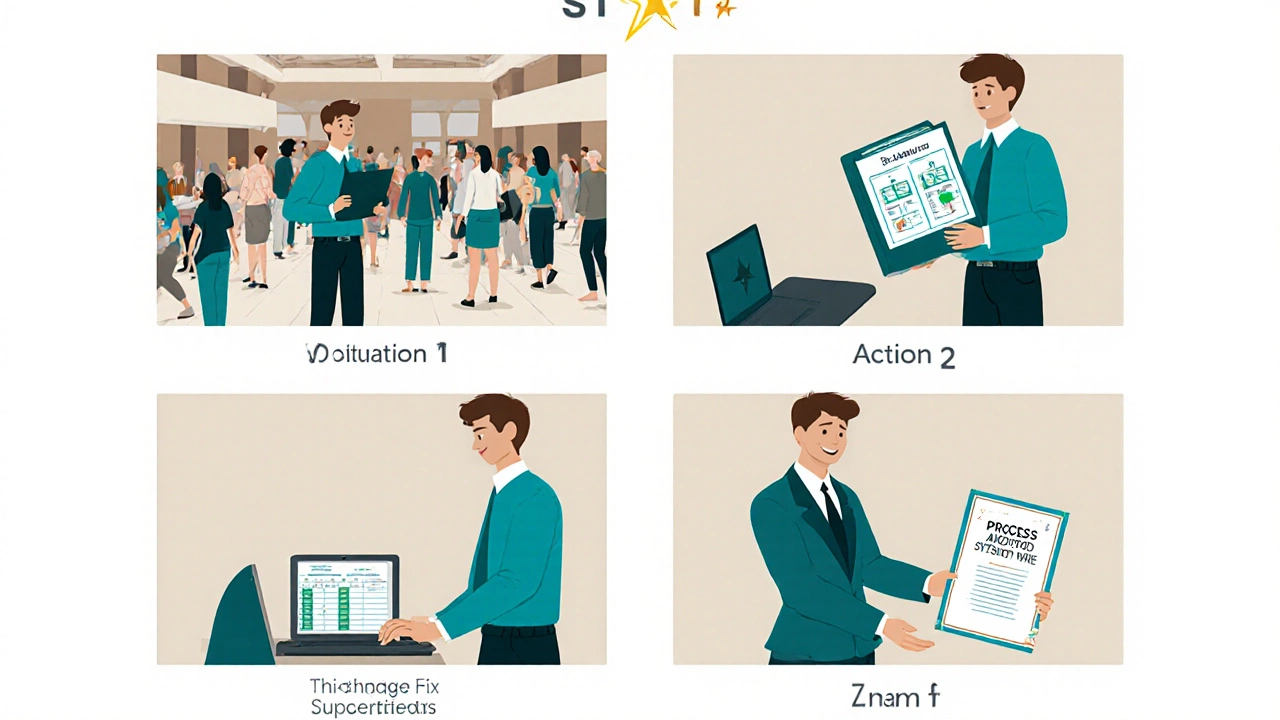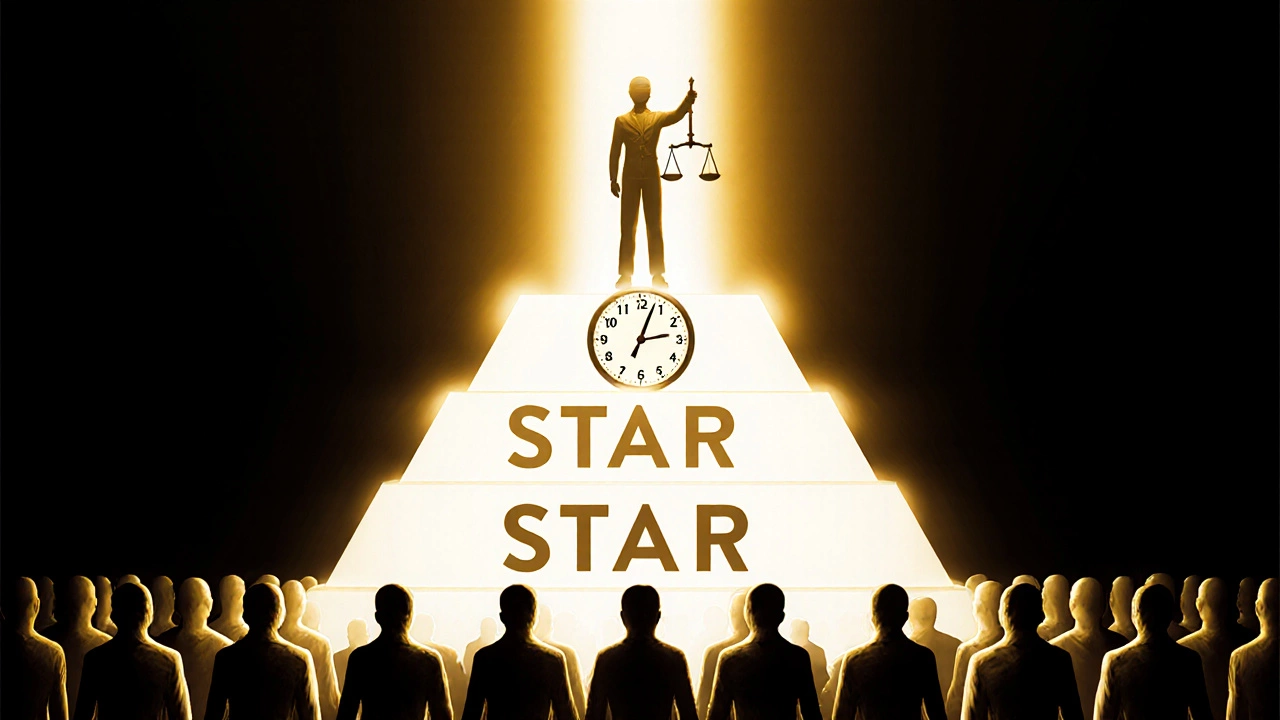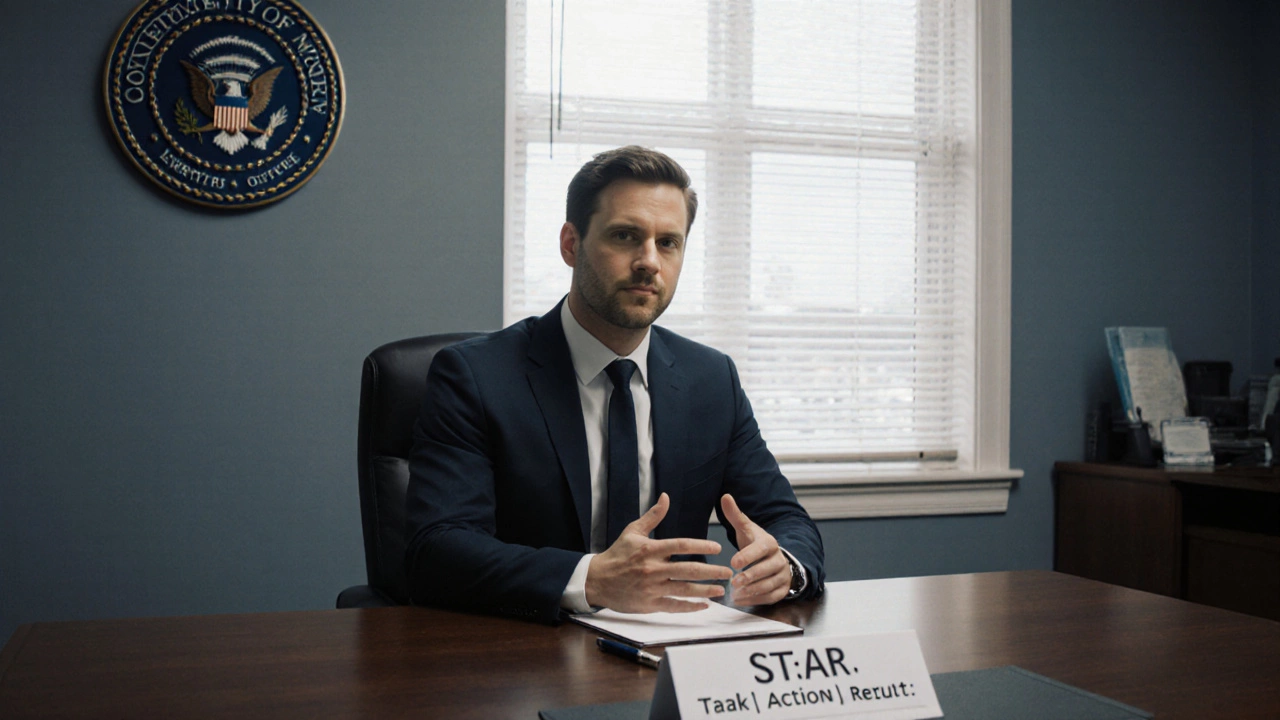STAR Interview Answer Builder
How This Works
Structure your interview answers using the STAR method with immediate feedback. Enter your experience details and see how to present it clearly for government interviews.
Your Structured Answer
90-120 secondsIf you’ve ever walked into a government job interview and been asked, "Tell me about a time you handled a difficult situation," you know how confusing that can feel. You’re not being asked for a guess or a theory-you’re being asked for proof. That’s where the STAR method comes in. It’s not a trick. It’s a simple, proven way to structure your answers so you don’t ramble, forget key details, or sound rehearsed. And if you’re applying for a government job in Australia, Canada, the UK, or the US, this method is often built right into their hiring systems.
Why Government Jobs Use the STAR Method
Government agencies don’t just hire based on resumes. They need to prove they’re selecting the most qualified person fairly. That’s why they use behavioral interview questions-questions that ask you to describe real past experiences. The logic? How you acted before is the best predictor of how you’ll act next. The STAR method gives hiring panels a clear, consistent way to compare candidates. Without it, one person might talk for five minutes about their job in general, while another gives a two-sentence answer. STAR forces everyone to answer the same way: Situation, Task, Action, Result. It’s not about sounding smart. It’s about being clear.The Four Parts of STAR Explained
Think of STAR like a recipe. Skip one ingredient, and the dish falls apart.- Situation: Set the scene. Where were you? What was happening? Keep it brief-two or three sentences max. Don’t start with "Back in 2018..." unless it’s critical. Just say: "While working as a frontline officer in a busy community center..."
- Task: What was your responsibility? What needed to be done? This is where you show ownership. Not "My team had to fix the problem," but "I was assigned to lead the response to the budget shortfall."
- Action: This is the meat. What did YOU do? Use "I," not "we." Even if it was a team effort, focus on your role. Did you research policies? Draft a proposal? Talk to stakeholders? Train staff? Be specific. "I created a tracking spreadsheet that mapped every department’s spending against targets," not "I helped with the budget."
- Result: What changed? Numbers speak louder than words. "Reduced processing time by 40%" is better than "It went better." If you can’t measure it, say what improved: "Staff reported higher satisfaction," or "The complaint rate dropped to zero for three months."
Real Example: STAR in Action for a Government Role
Question: "Tell me about a time you had to deal with a difficult client." Bad answer: "I’ve dealt with lots of angry people. I stay calm and listen. It usually works out." Good STAR answer:Situation: While working as a benefits officer at the Department of Social Services, I was assigned to a case where a single mother was denied emergency housing support due to a paperwork error.
Task: My job was to review the case, identify the mistake, and get the support reinstated within 48 hours, as per department policy.
Action: I pulled the original application and noticed the income figures were entered in annual instead of monthly terms. I called the applicant to confirm her actual income, cross-checked it with her payslips and Centrelink records, then drafted a formal appeal letter with all corrected documentation. I also contacted the regional supervisor to fast-track the review since the family was at risk of homelessness.
Result: The appeal was approved within 36 hours. The family received housing support, and the supervisor used my process as a template for similar cases. I was later invited to train new officers on identifying common data-entry errors in benefit applications.

What Not to Do
Many candidates mess up STAR in predictable ways:- Skipping the Situation: Jumping straight to the action makes your story feel random. The panel needs context.
- Using "we" instead of "I": If you say "We fixed the system," they have no idea what you did. Even if you were part of a team, say what you contributed.
- Being vague about results: "It went well" or "The client was happy" doesn’t prove anything. Always tie your action to an outcome.
- Talking for too long: Aim for 90-120 seconds per answer. Practice timing yourself. If you’re going over two minutes, you’re likely adding fluff.
- Choosing a bad example: Don’t pick something from high school or a job you quit because you hated it. Pick a recent, relevant, professional example-even if it was in a volunteer role.
How to Prepare: Build Your STAR Bank
Don’t wait until the day before the interview. Start now.- Look at the job description. What skills are they asking for? Problem-solving? Communication? Leadership? Compliance?
- Write down 5-7 real experiences from your work, volunteering, or even university where you used those skills.
- For each experience, write a STAR breakdown. Keep it short-bullet points are fine.
- Practice saying them out loud. Record yourself. Do you sound natural? Or like you’re reading a script?
- Get feedback. Ask a friend or mentor to listen and tell you if your answer was clear and convincing.
For government jobs, you’ll often face multiple behavioral questions in one interview. Having 5 solid STAR stories ready means you can adapt them to fit different questions. One story about managing a tight deadline can work for questions about time management, pressure, or prioritization.

STAR vs Other Interview Methods
Some companies use situational questions: "What would you do if...?" But government interviews almost always want real examples. STAR is designed for that. Other methods like the PAR method (Problem, Action, Result) or CAR (Challenge, Action, Result) are similar-but STAR adds the Situation. That small addition makes all the difference. It gives context. It shows you understand the environment you were working in. In public sector hiring, context matters. You’re not just solving a problem-you’re solving it within rules, budgets, and public accountability. STAR helps you show that awareness.Final Tip: Be Honest, Not Perfect
You don’t need to have saved the day with a heroic act. Sometimes the best STAR answers are about learning from failure. Example: "I once missed a reporting deadline because I didn’t check the calendar. I took responsibility, apologized to my supervisor, and set up a digital reminder system that I still use today. That mistake taught me how to manage deadlines better than any training ever did." That’s powerful. It shows accountability, growth, and self-awareness-all traits government agencies value more than perfection.What Happens After the Interview?
Many government agencies score interviews using a standardized rubric. Your STAR answers are graded on clarity, relevance, and evidence. If your answer doesn’t clearly hit all four parts, you lose points-even if your story was good. That’s why practice matters. Don’t just think about your answers. Say them. Out loud. In front of a mirror. To your dog. To a friend who doesn’t know anything about your job. The goal isn’t to sound like a robot. It’s to sound like someone who can explain their experience clearly, confidently, and without wasting anyone’s time.Is the STAR method only for government jobs?
No, but it’s especially common in government and public sector hiring because of the need for fairness and consistency. Many large corporations, nonprofits, and even universities use STAR for similar reasons. It’s not exclusive to government roles, but if you’re applying for one, it’s almost guaranteed you’ll be asked STAR-style questions.
Can I use the same STAR example for multiple questions?
Yes, absolutely. One strong STAR story can often answer several different questions. For example, a story about resolving a conflict with a colleague can work for questions about teamwork, communication, or handling pressure. Just tweak the focus slightly-emphasize the communication part for one question, the conflict resolution for another. The core story stays the same.
What if I don’t have a lot of work experience?
You don’t need a long resume. Use examples from volunteer work, university projects, sports teams, or even personal initiatives. Did you organize a community cleanup? Manage a group budget for a student club? Help a family member navigate a government service? Those count. The key is showing responsibility, action, and a result-even if it wasn’t in a paid job.
How long should a STAR answer be?
Aim for 90 to 120 seconds. That’s about 150-200 spoken words. If you’re under a minute, you’re missing details. If you’re over two minutes, you’re likely adding unnecessary info. Practice until you can deliver it clearly in under two minutes without rushing.
Should I memorize my STAR answers?
No. Memorizing sounds robotic. Instead, memorize the structure-Situation, Task, Action, Result-and the key facts: names, numbers, dates. Then tell the story in your own words. If you forget a detail, it’s okay. Just keep going. Interviewers care more about your clarity and honesty than perfect recall.
